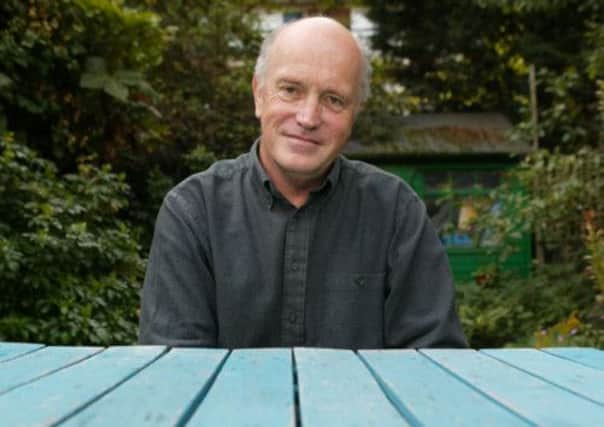Book review: American Smoke by Iain Sinclair


American Smoke
Iain Sinclair
Hamish Hamilton, 310 pp, £20
For nearly 40 years, Iain Sinclair has been the most imaginative, assiduous and idiosyncratic chronicler of London’s myths, boasts and hinterlands. From the early, avant-garde poetry of Lud Heat, Suicide Bridge and Flesh Eggs and Scalp Metal to his experimental novels such as White Chapell, Scarlet Tracings (the single best book about Jack The Ripper) and Radon Daughters as well as his equally daring graphic novel, Slow Chocolate Autopsy, or the psychogeographical field notes of non-fiction books like Lights Out For The Territory and London Orbital (his vaguely insane walk around the M25), no-one has delved deeper or ranged more widely over the city.
But any account of his career which portrayed him solely as a London magus, a capital revenant trapped inside the chalk circle of the ring-road, would be partial. There was also his novel about his natal Wales, Landor’s Tower and the A13 road-movie, Dining On Stones; his homage to John Clare and Epping Forest, Edge Of The Orison, and Ghost Milk, his excursions to other cities blighted by hubristic development (the property associations of that word date from 1890, but Sinclair has always had an eye on its French etymology: to unwrap, unfurl, unveil).
Advertisement
Hide AdSamuel Johnson famously said that when a man was tired of London, he was tired of life. Sinclair, in this exceptional new work, is neither tired of London, nor of life; but he needs to get away. The new London, of the Shard and the Gherkin, the Olympic Park and its emperor, the unparody BoJo, is not the London that first inspired Sinclair. So he returns to his wellsprings: a cache, a cabal even, of American writers who drifted through London but were rooted in the States.
What he delivers is not just a stunning evocation of the landscapes of America, nor just a typically awry account of the hangers-on and the keepers-of-the-flame, the remnants and the jetsam of the 1960s and 1970s, but a precise aetiology of what made him the writer he is. I would recommend this book to every creative writing student in the country, just so they started reading the radical writers Sinclair himself read. I would not recommend they try to imitate his prose style: Sinclair is an inimitable stylist. To attempt to ape his prose, with its fascination on toxins and the occult, with the clandestine and the polluted, the amnesiac and the niggle, would be a vain and futile endeavour. He is, on the level of the sentence, the kind of author Harold Bloom described as a “strong” writer. Writing in his shadow means wrestling with, not imitating, his oeuvre.
So who does Sinclair admire, and to whose hometowns does this odd pilgrimage stumble? Who are his personal luminaries? Sinclair begins with Charles Olson, a poet whose reputation in this country has always been sotto voce. The Maximus Poems, his most important work, is a staggering evocation of Gloucester, Massachusetts, which gathers together the earliest parts of the planet, when the town was part of Gondwanaland before continental ruptures, to the day-to-day conversations in the street. Sinclair conveys a sense of Olson’s profound importance in poetics with enthusiasm and an unrestrained awe. Reading him in Dublin was a formative experience, as it was for me after leaving university: I still shudder at such lines as “there are no hierarchies, no infinite, no such many as mass, there are only / eyes in all heads, / to be looked out of”.
Sinclair goes on to trace his own other influences. He tracks down those who knew Kerouac, there is interesting material about his much earlier meetings with Ginsberg, the time he met William Burroughs (who, I learned, carried around two Nazi coins to be put on his eyes in the event of his death), Ed Dorn in absentia and Gary Snyder in person.
But two other figures haunt the book: Roberto Bolano and Malcolm Lowry. It seems appropriate that Sinclair, who has always tested spatial limits, should swerve in his mental peregrinations towards the other parts of North America, Mexico in particular but also Canada. Bolano is yet another fugitive author seeking escape (Sinclair does a brilliant riff on his death being faked); Lowry another doomed author seeking redemption (and Sinclair’s visit to his grave in Sussex is profoundly moving). Lowry is, as he wrote in October Ferry To Gabriola, “a ghost that cannot speak at all unless addressed first”.
Sinclair relishes synchronicity, odd encounters, unbelievable chances. His books also cause them. I looked up that reference to Lowry’s novel and found, in the previous paragraph, this quote: “Or was it like one of those strange telephone calls between the villages of Wooler and Yetholme, famous in a point of criminal law, calls which, thought the villages themselves were only 15 miles apart across the Scottish border, nevertheless had to go 300 miles through Newcastle, Edinburgh, Galasheils?” How did Lowry manage to misspell the names of the places where I went to school and where my parents now live? And what was the famous point of criminal law? I hope Sinclair walks to Scotland to solve this riddle. Only he can.